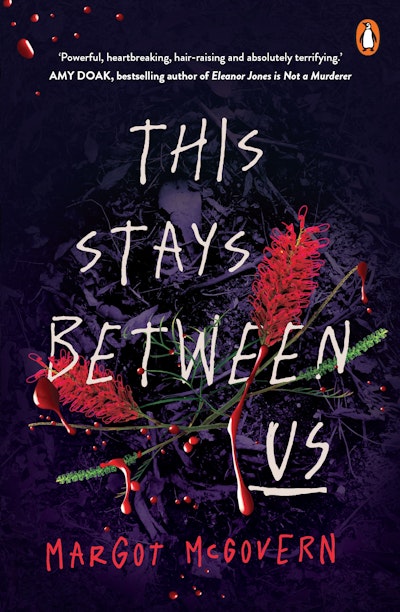We caught up with Margot McGovern to learn more about her new book, This Stays Between Us.
How would you describe your book?
This Stays Between Us is a cabin-in-the-woods-style horror story with a few big twists thrown in, and it's also a love letter to ‘90s teen horror films.
Why did you set the book in the year 2000?
I set it in 2000 to capture the nostalgia of the time, but also because I wanted to pay homage to the horror films of the late ‘90s and early 2000s – I wanted the book to have that same feel.
I also chose this period because one of the key themes in the book is consent, so I wanted to take readers back to a time well before #MeToo, when I was growing up, and show what it was like for young women then.
I hope readers will compare the book to how things are today and maybe understand better what has changed since 2000 (and what hasn't really). Fashion has gone back to the early 2000s and there's a huge throwback to the era happening, so I wanted to capture that while giving a realistic glimpse into that period.
Do you think that setting the book in an era that you’re familiar with helped the story feel realistic?
Yeah, in a way, it was easier to set the book in a period that I experienced because I could think back and remember what it was like.
I’ve saved my journals from the early 2000s, so I could look back at those and see the language we used. One of the things that was interesting is that a lot of the language that was used back then is just not language that would be acceptable today.
It's quite offensive, so I wanted to try and capture the authenticity of the period, but also avoid unnecessarily using offensive language.
The book's setting is inspired by a camp you went to while in school, right?
Yeah! Part of the reason I wanted to write this story was because that camp was terrifying.
In my memories, I remember feeling like the teachers were really far away from us, and we were just in these houses in the bush in the middle of nowhere. As an adult, looking back, I thought, ‘Surely it wasn't that far’. But I found it on Google Maps and the teachers had been staying a kilometre away!
I returned to the town while researching This Stays Between Us because I hadn’t been there for twenty years.
The book takes place over 48 hours, so I spent 48 hours in one of these houses to see what it was like. I was struck by how remote it was. What were my teachers thinking?
When I went to the camp, I was a bit younger than the girls in the book, so I was shocked that our teachers had just left us out there, where it's quite treacherous, with mining equipment lying around.
I think that was another reason the book ended up being set in 2000, I don’t know if schools could get away with doing that now!
Aside from that real camp experience, what draws you to horror as a genre?
I’ve always really enjoyed horror. I grew up reading Goosebumps when I was seven or eight years old, and I never really stopped. I love the idea that in horror stories, there are these little cracks in the world where creepy things seep in.
There’s an idea that there’s more out there, and I love that. Nothing is taboo or off the table. We can use horror to look at some of the things that are happening in our world, but indirectly.
It allows us to confront fears and anxieties that we have without having to look at them head-on, which we may not be able to do. We can look at them metaphorically and work through our thinking without the emotion attached.
The book opens with a quote from Frankenstein. Why did you choose that one?
It’s one of the first horror novels, it helped start the genre, and it was written by a 19-year-old girl.
The quote at the start of the book speaks to the themes I wanted to touch on – the relationship between fear and power. If you have power, you don't need to be afraid. This Stays Between Us plays with the concept of power and how the balance can shift.
At the same time that this book pays homage to the horror genre, it feels like it’s also turning some of the classic tropes upside-down. Was this intentional?
Yeah, two things are happening in the book. On the one hand, I love horror so much, and the book is all about showing my love for this genre – very specifically the tongue-in-cheek style of horror that was huge in the late '90s.
On that level, it is a fun book, but there’s also a more serious side.
I wanted to take some of those problematic tropes, flip the script on them and look at how these stories reflect what's happening to young women in the world.
In a way, you’re rewriting some of the tropes.
I hope to do that while still capturing the feeling of watching a scary movie at a sleepover with your friends!
I wanted the book to have that sense of fun while leaving some of the more problematic aspects of this 90s-style horror behind.
Don’t get me wrong, it’s super trope-y – but in a very self-conscious, deliberate way. So I hope readers have fun with it.














